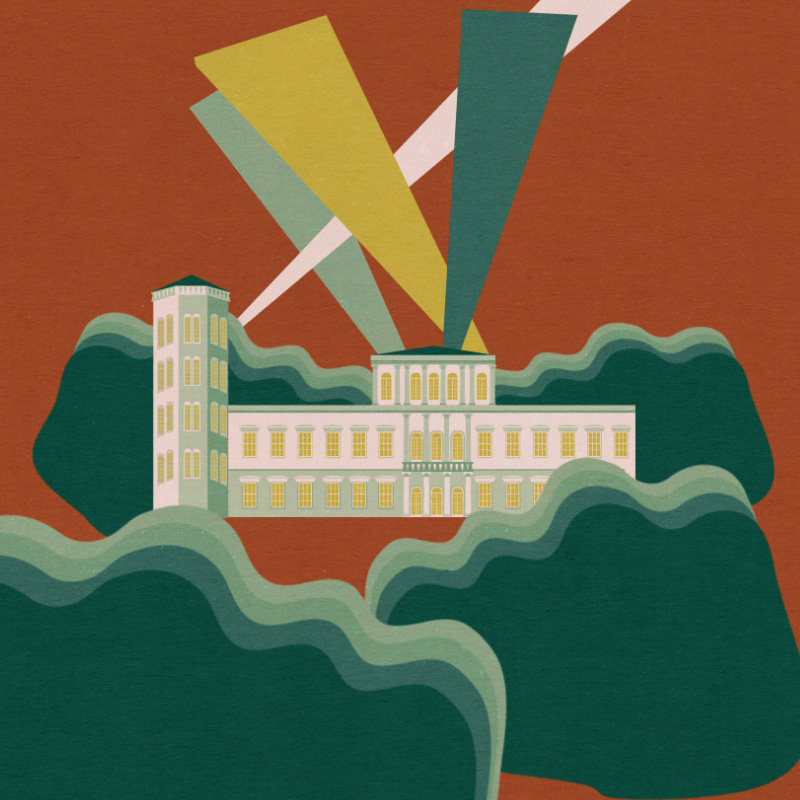An Electric Light Came On for the First Time in Lithuania in Rietavas Manor
> BACK TO 100 STORIESListen to this text (Lithuanian):
Large cities are generally considered to be cultural and technical centers. But many towns have a history that is no less impressive. One of them is Rietavas. The history of this town dates back to the thirteenth century, when it was first mentioned in written sources in 1253. In 1792, the last king of the Polish-Lithuanian Commonwealth Stanislovas Augustas granted Rietavas the rights of a free city and a coat of arms that depicted a running lion with a sword in its teeth. A similar coat of arms is still used by the Rietavas municipality.
Rietavas was developed and made famous by the noble families of Tiškevičius, Zubovas and Oginskis who lived there. The Oginskis family had an especially large impact on the city’s prosperity in the mid-nineteenth century. Irenėjus Oginskis, who received a European education, and later his son Bogdanas, introduced new technical and cultural innovations to Rietavas. The first agricultural exhibitions and symphonic music and wind instrument concerts in Lithuania took place there. Moreover, serfdom was abolished very early in Rietavas, in 1835, by the decision of Irenėjus Oginskis – the official reform abolishing serfdom was adopted almost thirty years later in the rest of Lithuania (in 1861).
Rietavas was also the first “electrified” city in Lithuania. The first power plant in Lithuania was built and the electricity line to Duke Oginskis palace and park was installed in 1892. The first light bulbs in Lithuania were lit in Saint Michael the Archangel Church and Rietavas Manor at Easter of the same year. Only eleven years had passed since the day when Thomas Edison presented the world's first light bulb at the International Electrical Exhibition in Paris in 1881! The first telephone in Lithuania was also installed in Rietavas: a 54 km-long private telephone line which connected Rietavas, Plungė (where Bogdanas’ brother Mykolas Oginskis lived), Kretinga and Palanga was built in the autumn of 1882. This line was introduced only six years after the invention of the telephone thanks to the efforts of Bogdanas Oginskis. It is an astonishing speed if you think that it usually took decades before the latest technical inventions were put into practice!
In the middle of the nineteenth century, Rietavas was also famous for its manor park, located in a natural, but just slightly thinned forest. Irenėjus Oginskis chose the plants for the park himself: European larch, chestnuts, weeping willows, Balkan and Siberian pines, and red oaks grew next to local trees and bushes.
Unfortunately, Rietavas Manor fell into disrepair in the twentieth century. In 1909, a fire broke out in the palace and burned many of the valuables inside. During World War I, the copper roof of the palace was torn down and swans and pheasants of the park were all killed. In 1926, the ruined palace was sold at the auction: the new owner demolished the abandoned buildings and used the old bricks to build a new house. The Rietavas Manor Park, former music school and musicians’ dormitory, the water tower, and a few outbuildings have survived to this day. The Oginskis family chapel, where the remains of Bogdanas and Mykolas Oginskis are buried, still stands on the edge of the manor’s grounds.

